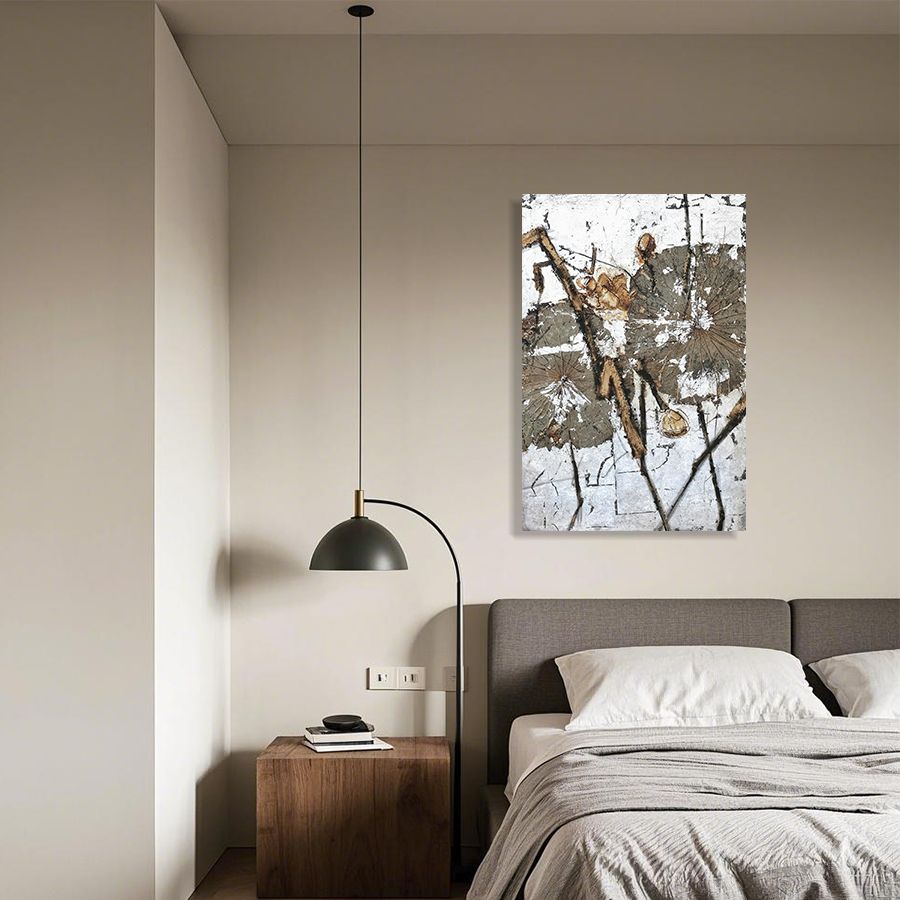In a world full of visual noise, the quiet power of a textured oil painting like Traces of Lotus in Frostwhite invites us to slow down and truly see. As Thomas Merton so eloquently stated, “Art enables us to find ourselves and lose ourselves at the same time.” This paradox encapsulates the true essence of fine art—and this particular canvas offers a vivid illustration of it.
🌫️ The Poetic Beauty of “Traces of Lotus in Frostwhite”
With a palette rooted in muted whites, frosty silvers, and soft earth tones, Traces of Lotus in Frostwhite captures the delicate resilience of nature. The suggestion of lotus petals hidden beneath a veil of texture speaks to quiet transformation—growth under stillness.
The textured surface and layered application of oil paint invite not just visual appreciation but tactile imagination. The viewer isn’t told what to see; rather, they are invited to interpret, feel, and journey inward.
🎨 Oil Painting as a Path to the Self
Oil paintings—especially those in the abstract or minimalist genre—possess a spiritual quality. They offer depth, patience, and complexity, much like the process of self-reflection. Here’s how this artwork, and oil painting in general, embodies Merton’s message:
- To find ourselves: The layered brushstrokes mimic the inner workings of thought and emotion. The softness of the composition helps us access our calm, centered selves.
- To lose ourselves: The painting allows us to drift, meditate, and escape. It carries us beyond the literal, into a personal and emotional realm that cannot be spoken.
This dual nature is precisely why abstract oil paintings are timeless—they are both mirrors and windows.
🛋️ Where This Painting Belongs: Atmosphere and Space
“Traces of Lotus in Frostwhite” is perfectly suited to environments seeking a sense of serenity, refinement, and emotional depth:
- Zen-inspired interiors – creating a harmonious balance between nature and simplicity.
- Bedrooms and reading nooks – enhancing peace and relaxation.
- Spa or meditation spaces – supporting a calm, healing atmosphere.
- Boutique hotels, art galleries, or luxury offices – adding understated sophistication and a thought-provoking focal point.
This painting doesn’t demand attention—it gently holds it. Its presence is tranquil but impactful.
🧠 The Meaning Behind the Texture
Unlike digital or flat art, textured oil paintings carry movement, memory, and presence. You can see where the artist paused, pressed, or layered. In this way, texture becomes the unspoken language of intention.
The lotus, a universal symbol of purity and rebirth, emerges subtly in this composition—not as a subject but as an impression. This encourages the viewer to think beyond form and into symbolism, emotion, and personal resonance.
🌌 Why Abstract Textured Oil Paintings Matter Today
In today’s digital age, the tactility and originality of oil paintings serve as a reminder of what’s real, grounded, and enduring. They offer:
- A personal, emotional experience not achievable through mass-printed décor
- A way to connect with deeper parts of ourselves through visual meditation
- A statement of timeless elegance and intentional design
Whether used in interior design or collected for personal growth, works like Traces of Lotus in Frostwhite act as soulful anchors.
